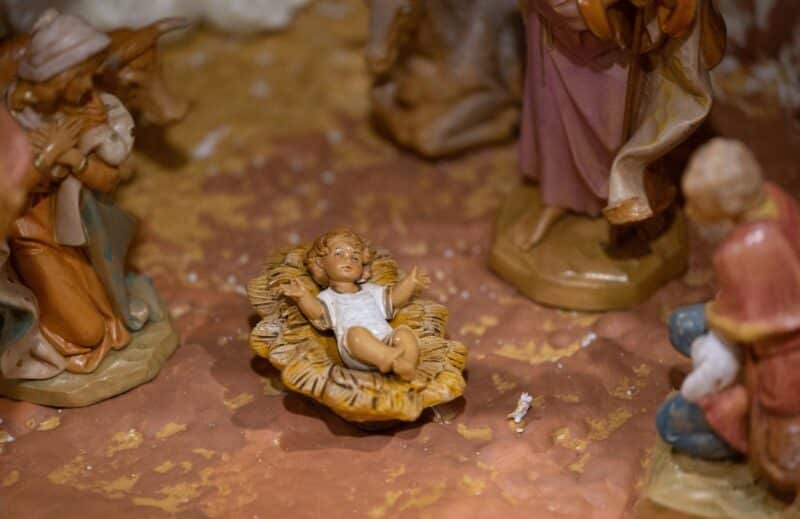As 2023 draws to a close, it is customary to look back over the year that has been. This year started with the news that Pope Benedict XVI had died on the last day of 2022. So it seems fitting, that in the build-up to Christmas, 2023, we conclude the calendar year with some reflections by Benedict on the birth of Jesus.
In his short book, “Jesus of Nazareth – The Infancy Narratives”, Benedict explored the fact that there was no “room” for Jesus when he came into the world.
“He who was crucified outside the city (c.f. Hebrews 13:12), also came into the world outside the city,” Benedict wrote, citing Scripture passages along similar lines (John 1:11; Matthew 8:20).
“This should cause us to reflect – it points towards the reversal of values found in the figure of Jesus Christ and his message. From the moment of his birth, he belongs outside the realm of what is important and powerful in worldly terms. Yet it is this unimportant and powerless child that proves to be the truly powerful one, the one on whom ultimately everything depends. So one aspect of becoming a Christian is having to leave behind what everyone else thinks and wants, the prevailing standards, in order to enter the light of the truth of our being, and aided by that light, to find the right path.”
That right path usually involves living and working in the “city”, as it were, whilst not being of that city. The risen Christ gives Christians the grace, spiritual power and sustenance for this life.
Benedict also reflected on the fact that Mary wrapped the infant Jesus in swaddling clothes.
“Iconographic tradition has theologically interpreted the manger and the swaddling clothes in terms of the theology of the Fathers,” Benedict wrote.
“The child wrapped stiffly in bandages is seen as prefiguring the hour of his death; from the outset, he is the sacrificial victim . . . The manger, then, was seen as a kind of altar.”
The light of the manger at Bethlehem, likely in a cave in a hillside, is not without end – there is a shadow cast from the cross on the hill of Calvary.
But for believers, the shadow from Calvary is itself overshadowed, as it were, by the radiant light from the empty tomb, on the first Easter day. God has the last word as well as the first.
In the letter to the Romans, Benedict wrote, Paul calls Jesus the “first-born among many brethren” (Romans 8:29).
“Having risen, he is now first born in a new way, and at the same time he is the beginning of a host of brethren. In the new birth of the Resurrection, Jesus is no longer merely first in dignity, he now ushers in a new humanity. Once he had broken through the iron door of death, there are many more who can pass through with him – many who, in baptism, have died with him and risen with him.
Benedict continued: “In the letter to the Colossians, the idea is developed further: Christ is called ‘first-born of all creation’ (Colossians 1:15) and ‘first-born from the dead’ (Colossians 1:18). ‘In him, all things were created’ (Colossians 1:16), ‘that in everything he might be pre-eminent’. (Colossians 1:18). The concept of first-born takes on a cosmic dimension. Christ, the incarnate Son, is – so to speak – God’s first thought, preceding all creation, which is ordered toward him and proceeds from him. He is both the beginning and the goal of the new creation that was initiated with the Resurrection.”
“Luke does not speak in these terms, yet for us, reading his Gospel with the benefit of hindsight, this cosmic glory is already present in the lowly manger in the cave at Bethlehem: here, he who is truly the first-born of all that is, came to dwell in our midst.”
Let us rejoice. Gloria in Excelsis Deo.

Joy to the world. Gloria in Excelsis Deo.
Glory to God in the highest.